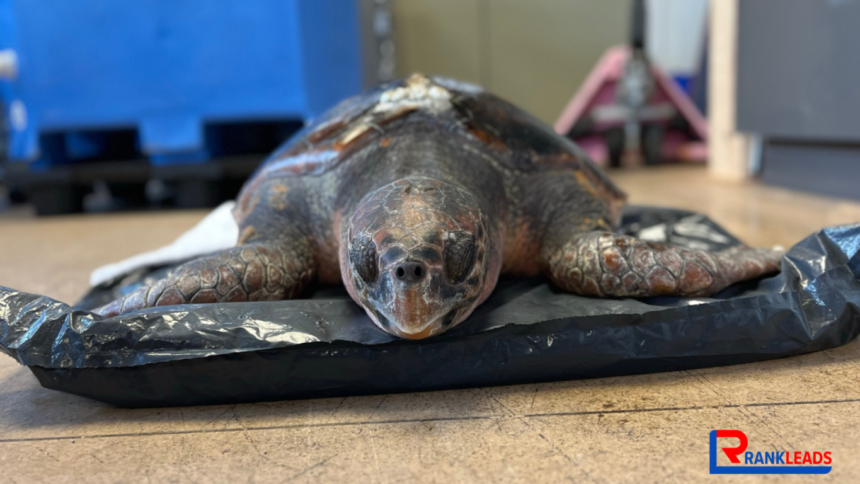The Thanos Alligator Snapping Turtle is a fascinating creature that captures the imagination with its dinosaur-like appearance and formidable predatory skills. Known for its immense size, powerful jaws, and unique adaptations, this turtle stands out as a true marvel of nature. In this article, we explore the incredible characteristics, behavior, and significance of the Thanos Alligator Snapping Turtle while shedding light on its role in freshwater ecosystems.
What Is the Thanos Alligator Snapping Turtle?
The Thanos Alligator Snapping Turtle is a rare and distinctive species of freshwater turtle native to North America. Its name is a nod to its imposing presence and prehistoric appearance, reminiscent of the Marvel character Thanos. This turtle is celebrated for its resilience, longevity, and survival strategies, making it a unique subject of study for wildlife enthusiasts and scientists alike.
Physical Characteristics of the Thanos Alligator Snapping Turtle
The Thanos Alligator Snapping Turtle’s appearance sets it apart from other turtle species. Some of its defining physical traits include:
Massive Size: These turtles can weigh up to 220 pounds, with some individuals growing over 30 inches in length.
Distinctive Shell Design: The ridged, spiked shell resembles ancient armor, offering protection and camouflage.
Powerful Jaws: Equipped with one of the strongest bites in the animal kingdom, it can crush bones and shells effortlessly.
This unique combination of features makes the Thanos Alligator Snapping Turtle both intimidating and awe-inspiring.

Natural Habitat and Range
The Thanos Alligator Snapping Turtle thrives in the slow-moving waters of rivers, lakes, and swamps across the southeastern United States. States such as Louisiana, Texas, and Florida are prime habitats for this species, where they find abundant vegetation and prey. These turtles are highly adaptable, using muddy waters and submerged logs to remain hidden from predators and humans.
Diet and Feeding Behavior
The Thanos Alligator Snapping Turtle is an apex predator that employs ambush tactics to secure its meals. Key aspects of its feeding behavior include:
Carnivorous Diet: Fish, frogs, birds, and even small mammals make up the majority of its diet.
Unique Tongue Adaptation: It has a worm-like appendage on its tongue that lures prey within striking distance.
Patience and Precision: This turtle remains motionless for hours, waiting for the right moment to attack.
Its role as a predator helps maintain ecological balance by controlling prey populations in its habitat.
Reproduction and Lifecycle
Breeding season for the Thanos Alligator Snapping Turtle occurs in the spring and early summer. Female turtles lay eggs in sandy or muddy nests near water bodies. Here are some highlights of their reproductive cycle:
Egg Clutches: Females can lay between 20-50 eggs in a single nesting event.
Temperature-Dependent Gender: The temperature of the nest determines the sex of the hatchlings.
High Mortality Rates: Hatchlings are vulnerable to predators, and only a small percentage survive to adulthood.
Despite these challenges, the Thanos Alligator Snapping Turtle has managed to sustain its population through remarkable resilience.
Behavioral Traits and Adaptations
The Snapping Turtle is an exceptional example of evolutionary adaptation. Its behavior is shaped by survival instincts that allow it to dominate its environment.
Ambush Hunting: Its ability to remain still for long periods ensures a high success rate during hunts.
Nocturnal Activity: These turtles are most active at night, reducing competition and increasing predatory opportunities.
Camouflage: Their rugged shell and muddy coloration allow them to blend seamlessly with their environment.
These adaptations make the Thanos Alligator Snapping Turtle one of nature’s most efficient hunters.
Threats and Conservation Efforts
Despite its formidable characteristics, the Thanos Alligator Snapping Turtle faces several threats in the wild. These include:
- Habitat Destruction: Urbanization and pollution have significantly reduced suitable habitats.
- Poaching: Their shells and meat are often sought after in illegal wildlife trade.
- Climate Change: Altered temperatures can affect reproduction rates and food availability.
Conservation organizations are working tirelessly to protect this species by preserving habitats, implementing anti-poaching measures, and raising public awareness.
The Importance of the Thanos Alligator Snapping Turtle in Ecosystems
The Snapping Turtle plays a vital role in maintaining the balance of aquatic ecosystems. By preying on smaller aquatic animals, it helps regulate populations, ensuring biodiversity. Moreover, its presence serves as an indicator of environmental health, highlighting the need for clean and sustainable freshwater habitats.

Caring for a Thanos Alligator Snapping Turtle in Captivity
Keeping a Thanos Alligator as a pet is a challenging but rewarding experience for experienced keepers. Some key requirements include:
- Large Enclosure: These turtles need ample space to swim and hide.
- Proper Diet: A balanced diet of live prey, commercial turtle food, and occasional supplements is essential.
- Water Quality: Regular cleaning and filtration systems are necessary to maintain a healthy environment.
Proper care and understanding of their needs are critical for their well-being in captivity.
FAQs About Thanos Alligator Snapping Turtle
How strong is the bite of the Thanos Alligator Snapping Turtle?
Its bite is extremely powerful, capable of crushing bones and shells with ease.
What is the average lifespan of a Snapping Turtle?
In the wild, they can live up to 70 years, while those in captivity may live even longer with proper care.
Why is it called the Thanos Alligator Snapping Turtle?
The name references its rugged, dominant appearance, reminiscent of the Marvel character Thanos.
Are Thanos Alligator Snapping Turtles dangerous to humans?
While not aggressive, they can inflict serious injuries if provoked or mishandled.
What can we do to protect the Thanos Alligator?
Supporting conservation efforts, protecting wetlands, and avoiding illegal wildlife trade are crucial steps.
Conclusion
The Thanos Alligator Snapping Turtle is a true marvel of nature, embodying strength, resilience, and ancient beauty. As a key predator and environmental indicator, its survival is essential for maintaining the balance of aquatic ecosystems. While the threats it faces are significant, ongoing conservation efforts offer hope for the future of this remarkable species. Whether admired in the wild or studied in captivity, the Thanos Alligator continues to captivate and inspire.








